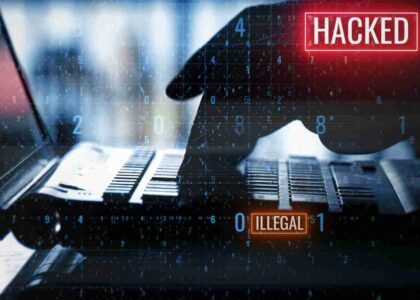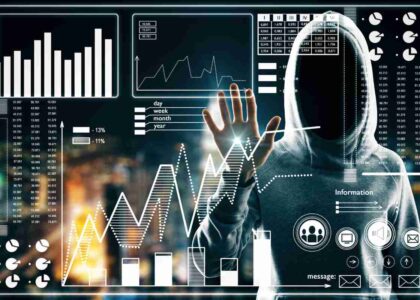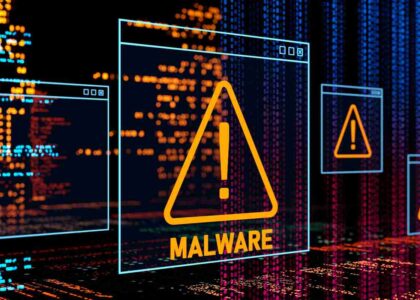In our hyper-connected digital age, one of the most dangerous threats lurking in the shadows is something most internet users have heard of, but few truly understand: Malware. Short for malicious software, malware is more than just a technical nuisance—it can be a devastating force that compromises your data, steals your identity, and disrupts your life or business.
If you’ve ever wondered why cybersecurity professionals lose sleep at night or why IT teams emphasize antivirus software and secure networks, you’re about to find out. This in-depth guide will help you understand what malware is, its many sinister forms, and what you can do to protect yourself.
What is Malware?
Malware refers to any software intentionally designed to damage, disrupt, or gain unauthorized access to a system. Unlike typical software applications that aim to help you with tasks or entertainment, malware exists solely for nefarious purposes—whether it’s stealing data, spying on your online activities, or extorting you for money.
Malware can infect any type of digital device: computers, smartphones, tablets, and even smart home devices like your Alexa or smart TV. It’s sneaky, smart, and constantly evolving, making it a major concern for individuals, businesses, and governments alike.
Why Should You Care?
You should care about malware because:
- It can steal your sensitive information like banking credentials and passwords.
- It can lock or delete your important files.
- It can turn your device into a bot for criminal activities.
- It can spy on your activities, invading your privacy.
- It can cost you money, either directly (through ransomware) or indirectly (data loss, reputation damage).
Now that we’ve established why malware is a serious issue, let’s break down the different types of malware you might encounter.
Types of Malware You Should Know
Malware is not a one-size-fits-all threat. It comes in various forms, each with its own way of infiltrating and damaging your system. Here are the most common and dangerous types:
Ransomware
This is one of the most feared types of malware today. Ransomware encrypts your data and demands payment (usually in cryptocurrency) to unlock it. Even law enforcement agencies and hospitals have been victims. Paying the ransom doesn’t always guarantee your files will be restored.
Real-World Example: The infamous WannaCry ransomware attack in 2017 affected hundreds of thousands of computers across 150 countries, causing billions of dollars in damages.
Fileless Malware
Fileless malware is particularly sneaky. It doesn’t install files on your system but instead uses tools already built into your operating system—like PowerShell or WMI (Windows Management Instrumentation)—to launch attacks.
Why it’s dangerous: Because it doesn’t leave traditional file traces, it often goes undetected by antivirus software.
Spyware
Spyware secretly monitors and records your digital activity, including keystrokes, browsing habits, and login credentials. It can be used to steal personal data or corporate secrets.
Warning Sign: If your device suddenly becomes slow and your browser behaves oddly, spyware might be the culprit.
Adware
Adware floods your screen with unwanted ads. While not always malicious, it can be intrusive and annoying—and sometimes serves as a gateway to more serious threats.
Watch out for: Pop-ups and redirects, especially when visiting unfamiliar websites.
Trojans
Named after the Trojan Horse from Greek mythology, this malware masquerades as a legitimate file or program to trick you into installing it. Once installed, it can steal data, install other malware, or create backdoors for attackers.
Example: A “free” PDF converter that quietly installs a banking Trojan to steal your financial info.
Worms
Unlike viruses that need human action to spread, worms replicate themselves and spread across networks without any interaction. They can consume system resources, slow down networks, and deliver payloads like ransomware.
Fun Fact: Worms were among the first types of malware to be discovered in the early days of the internet.
Rootkits
Rootkits are a set of tools that give attackers administrative access to your system. Once installed, they can control your device, monitor activity, and hide other malware.
Why they’re scary: Rootkits operate at the system level, making them extremely hard to detect and remove.
Keyloggers
Keyloggers record every keystroke you make, capturing passwords, messages, and credit card numbers. This data is sent back to the attacker, who can use it for identity theft or fraud.
Common infection methods: Phishing emails, malicious downloads, and physical access to the device.
Bots
Bots are software programs that perform automated tasks. When used maliciously, they become part of a botnet—a network of infected devices controlled by hackers to launch large-scale attacks like Distributed Denial of Service (DDoS).
Why this matters: Your device could be part of a botnet without you even knowing it!
Tips to Prevent a Malware Attack
Malware may sound scary, but there are practical steps you can take to protect yourself. Here’s what you should be doing:
1. Don’t Download Software from Unknown Sources
Stick to official app stores or trusted developers. Third-party sites often bundle malware with free software.
2. Avoid Clicking Suspicious Pop-Ups & Use Strong Passwords
If it looks fishy, it probably is. Don’t fall for pop-ups claiming you’ve won a prize. Also, use complex, unique passwords for each of your accounts.
3. Use Multi-Factor Authentication (MFA)
Even if a hacker gets your password, they won’t be able to access your account without the second form of verification.
4. Don’t Open Emails or Attachments from Unknown Senders
Phishing is a common way to spread malware. Always verify the sender before clicking on links or downloading attachments.
5. Only Download Trusted Software & Keep Your Systems Updated
Regular updates patch security holes. Cybercriminals often exploit known vulnerabilities in outdated software.
6. Stick to Top-Level Domains and Back Up Your Data Regularly
Websites with domain extensions like .com, .org, and .net are typically safer. Also, keep backups of important files in case of a ransomware attack.
What to Do If You Suspect a Malware Infection
- Disconnect from the internet to prevent the malware from communicating with command and control servers.
- Run a full antivirus/malware scan using reputable software.
- Boot your device in safe mode to stop the malware from executing.
- Change your passwords, especially for banking, email, and social media accounts.
- Restore from a backup if your system is beyond repair.
The Bigger Picture: Malware and You
Whether you’re a casual user, a remote worker, or running a business, malware is a threat that can impact every facet of your digital life. The damage can range from inconvenience to full-blown financial ruin. And with the rise of AI and IoT (Internet of Things), the threat landscape is only growing.
The key is to stay informed, practice digital hygiene, and always be cautious. Cybersecurity isn’t just for IT experts anymore—it’s a personal responsibility.
Final Thoughts
Malware isn’t just a buzzword; it’s a real and growing threat that you can’t afford to ignore. Whether it’s ransomware locking your files, spyware watching your every move, or bots turning your computer into a zombie, the risks are real.
But with the right knowledge and a proactive mindset, you can protect yourself.
So, stay updated, stay cautious, and most importantly—stay secure. 🔒
Have you ever dealt with a malware attack? Share your experience in the comments below. Let’s help each other stay safe online.





